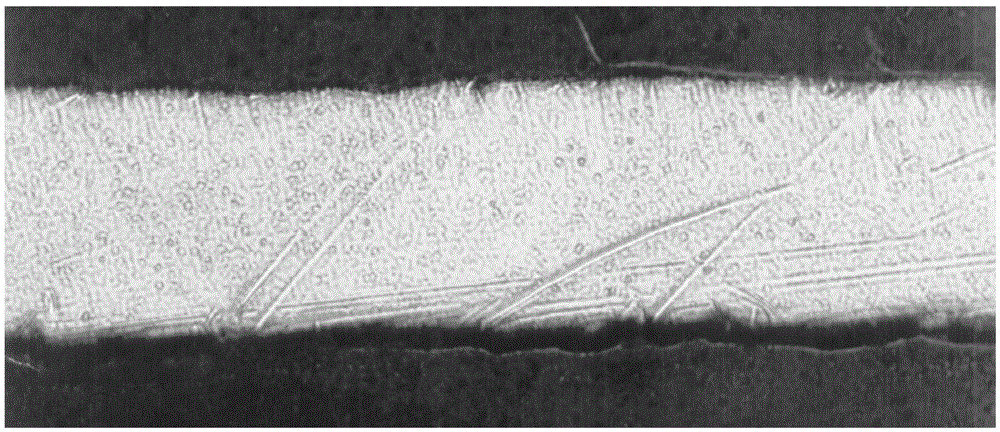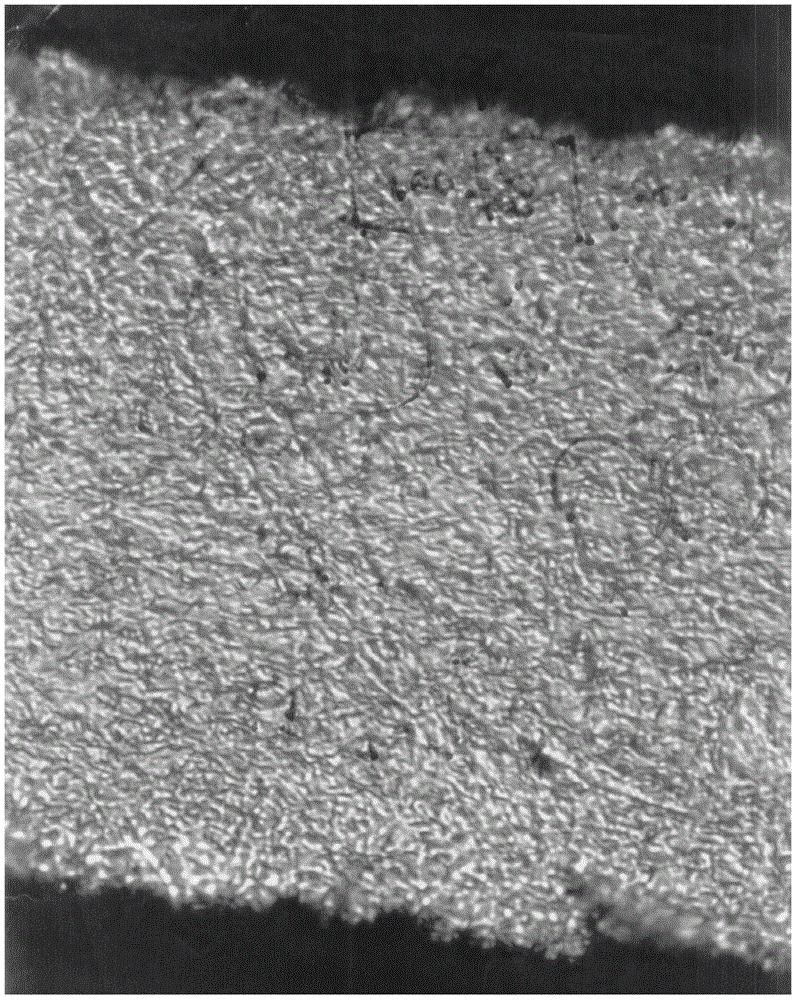Breakage-preventing machining process for tungsten-base alloy wire rods
A tungsten-based alloy and processing technology, applied in the field of electron emission cathode material preparation, can solve the problems of low strength of alloy materials, cellulose disorder, product fracture, etc., and achieve the effect of excellent physical properties and uniform staggered crystal phases.
- Summary
- Abstract
- Description
- Claims
- Application Information
AI Technical Summary
Problems solved by technology
Method used
Image
Examples
Embodiment 1
[0017] The anti-fracture processing technology of tungsten-based alloy wire rod comprises the following steps:
[0018] 1) Stretching, using the unidirectional stretching method for wire stretching, that is, before the next stretching process, the wire rewinding operation is performed first, and the thread end of the previous process pressed on the innermost part of the reel is poured out, As the thread end of the next stretching process.
[0019] 2) Annealing, in order to shorten the processing time, the rapid temperature rise and fall annealing treatment is adopted.
[0020] Comparative Experiment
[0021] In the experimental method, the tungsten-based alloy wire prepared in Example 1 and the tungsten-based alloy wire prepared by the traditional process were respectively bent to 10 bending points with an angle of 90°, and then straightened; the same bending point was operated back and forth twice.
[0022] Experimental results: using the tungsten-based alloy wire prepared...
Embodiment 2
[0025] The anti-fracture processing technology of tungsten-based alloy wire rod comprises the following steps:
[0026] 1) Stretching, using the unidirectional stretching method for wire stretching, that is, before the next stretching process, the wire rewinding operation is performed first, and the thread end of the previous process pressed on the innermost part of the reel is poured out, As the thread end of the next stretching process.
[0027] 2) Annealing treatment: the annealing treatment is carried out by using a parabolic heating and cooling process; that is, the cooling curve is parabolic, and the temperature is kept constant for 20-40 minutes every time a temperature gradient is lowered until the annealing is completed. In this embodiment, the preferred temperature gradient is 50° C., and the preferred constant temperature time is 30 minutes.
[0028] figure 2 Shown is the microstructure diagram of the tungsten-based alloy produced by the fracture-resistant proces...
PUM
 Login to View More
Login to View More Abstract
Description
Claims
Application Information
 Login to View More
Login to View More - R&D
- Intellectual Property
- Life Sciences
- Materials
- Tech Scout
- Unparalleled Data Quality
- Higher Quality Content
- 60% Fewer Hallucinations
Browse by: Latest US Patents, China's latest patents, Technical Efficacy Thesaurus, Application Domain, Technology Topic, Popular Technical Reports.
© 2025 PatSnap. All rights reserved.Legal|Privacy policy|Modern Slavery Act Transparency Statement|Sitemap|About US| Contact US: help@patsnap.com


